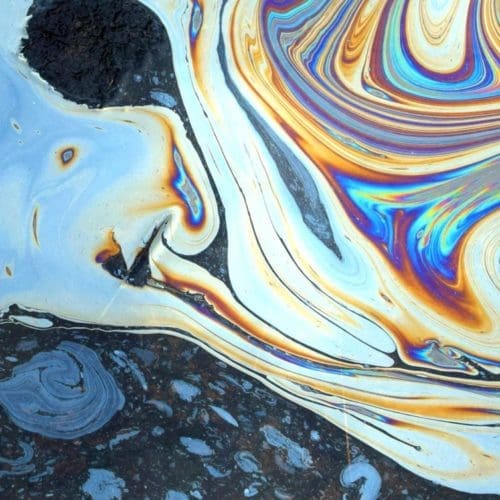‘Nuisance’ v ‘Continuing nuisance’ – Limitation in environmental claims
February 2021In the recent case of Jalla & Ors v Shell¹, the Court of Appeal has provided useful guidance on the concept of continuing nuisance in the context of environmental claims. The judgment focuses on the distinction between a single act of nuisance and ‘continuing nuisance’ and its relevance to the limitation period within which claims must be brought. It has interesting implications for claims arising from environmental damage.
The facts
The case was brought against Shell by 27,800 individuals and 457 communities who live and work by a stretch of coast in Nigeria. It relates to an oil spill for which Shell was responsible, which took place in December 2011. The Bonga oil field from which the spill occurred is located 120km off the coast of Nigeria. Oil is extracted by using a mobile oil rig which is linked to three submersible flexible flowlines. The oil is extracted from the seabed, through the flowlines onto vessels and tankers.
The spill itself continued for a period of about 5-6 hours before the relevant pipeline was switched off and it stopped leaking into the sea. The oil washed up on the claimants’ land within a matter of weeks, causing damage to fishing, farmland, drinking water, mangroves, shrines and land value. The primary 6-year limitation period in which a claim can be brought in UK law (under Section 2 of the Limitation Act 1980) expired in early 2018. The claim against Shell was not commenced until after that date.
The claimants argued that, although the spill took place more than 6 years ago, it had not been cleaned up properly and the damage it had caused was continuing; as such, there was a fresh cause of action in nuisance every day that the oil remained on the land. The limitation period should therefore be extended because of this continuing nuisance.
At first instance, the court concluded that the single spill gave rise to a one-off claim in nuisance which crystallised within weeks of 20 December 2011. There was no continuing nuisance, and the claimants were therefore time-barred from bringing their claim.
The judgment
In his judgment, Lord Justice Coulson recognised that oil pollution is a significant problem for many inhabitants of West Africa. Indeed, from a local perspective, it is also a significant problem in the UK whether arising from domestic or commercial premises. However, he made it clear that the court in this case was not concerned with the rights and wrongs of the oil spill in December 2011. The appeal was solely concerned with the operation of the Limitation Act.
Further, Lord Justice Coulson referred to Hull v Chard Union [1894]² in which a continuing cause of action was described as “a cause of action which arises from the repetition of acts or omissions of the same kind as that for which the action was brought.”
The claimants sought to argue that their case was closely aligned to Delaware Mansions Ltd v Westminster City Council [2002]³ in which the roots of a tree encroached onto neighbours’ land:
“the roots of a landowner’s tree spread and encroach under the neighbouring land. The roots begin to undermine the foundations of his neighbour’s house. Until such time as the landowner cuts down or severely prunes back the tree in question, he is responsible for the continuing encroachment of the roots. The tree roots therefore comprise a continuing nuisance. The landowner’s failure to abate the nuisance by dealing with the tree is a continuing one.”
However, the circumstances in the current case are different. The oil spill was not a continuing act or omission, nor a repetition of an original act or emission. Rather, it was a one-off leak, brought to a stop within 6 hours; it therefore gave rise to a single cause of action, in contrast to the ongoing encroachment of the tree roots in the Delaware Mansions case. The following points are of note:
- The incidence of nuisance is distinct from the damage or harm resulting from it. A nuisance cannot be said to be ‘continuing’ simply because the harm it has caused is ongoing. Such a conclusion would result in the obviously illogical situation whereby companies could be responsible for the adverse effects of an isolated oil leak fifty years later.
- To link a cause of action in nuisance with the presence of physical harm or damage would arguably sit uncomfortably alongside the case of Williams v Network Rail, concerning Japanese knotweed (see our earlier consideration of this case here), which suggested that the presence of actual physical damage is not always required to prove a cause of action in nuisance. Interference with the ability to fully use and enjoy the land will suffice.
- Nuisance continues until it is abated; as such, it would be wrong to conclude that Shell should be continually responsible for the effects of such nuisance even after the leak was stopped. Abatement means resolving the nuisance itself; it does not require remediation of any damage caused by that nuisance.
- Shell’s liability depended on its ability to control, prevent or eliminate the nuisance. The Court noted:
“what was within the respondent’s control was the ability to eliminate “the hazard which constitutes the nuisance”, namely the pipe leaking oil into the sea. They were able to stop the flow to that pipe, turn it off and stop the oil spill. They did not have any control over what happened to the oil once it was in the sea.”
- Shell had abated the nuisance and was not therefore liable on a continuing basis for any failure to remediate the damage it had caused, such damage being out of its control.
Also of interest is the Court’s observation that oil should be treated no differently from other substances that are allowed to escape. Its “particular properties” do not warrant any difference in legal approach to that adopted in relation to, for example, the toxic substances in the case of Cambridge Water v Eastern Counties Leather [1994][4]
The Court concluded that the oil leak in this case did not constitute a continuing nuisance. The cause of action arose at the time the leak first struck the coast – as such, the claimants were time-barred from bringing their claim.
Comment
The case provides an interesting reminder that ‘nuisance’ and ‘continuing nuisance’ are two distinct legal concepts. Continuing nuisance is dependent on the ongoing incidence of the nuisance itself; ongoing harm or damage resulting from said nuisance will not suffice.
From an environmental perspective, the judgment suggests that one-off leaks will be a single nuisance event even if the damage caused extends over a long period of time. This will be of significance in pollution cases, where it seems that any claims not brought within the primary limitation period (i.e. 6 years from the incident of nuisance itself) will be-time barred.
It leaves a question mark, however, over situations where an incident of pollution continues to cause effects that only emerge years down the line (as opposed to known effects that emerge earlier but are not remediated and continue to cause damage) – a subtle but important distinction.
A clear conflict exists between allowing recovery for losses caused by environmental incidents occurring many years ago and adhering to established principles of law (limitation). An interesting conundrum and one to watch in future. This case will be of particular interest to EIL and PL insurers for whom coverage considerations in respect of oil spills remain of paramount interest.
- Jalla & Ors v Shell International Trading and Shipping Company (Shell) and Anor [2021] EWCA Civ 63
- Hull v Chard Union [1894] 1 Ch 293
- Delaware Mansions Ltd v Westminster City [2002] 1 AC 32.
- Cambridge Water Co v Eastern Counties Leather Plc [1994] AC 264









